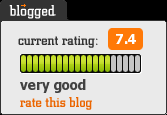
Code switching is a prominent literary element in Latino Poetry. Although code switching is not a prerequisite, Latino poets code switch (between English and Spanish) to conscript bilingual partisans, lectors, and proxies for whom Spanglish (or the admixture of English and Spanish) is the lingua franca.
The decision to code switch might be a political, ideological, or aesthetic one; then again, certain words and phrases are more sonorous or carry more gravity depending upon which language the poet chooses. For example, I like the word for “orange” much better in Spanish: “naranja”. “Naranja” not only sounds more interesting, the word “orange” is notorious for not having a word that rhymes with it, and might prove limited when it comes time to rhyme or off-rhyme.
However, code switching is a literary behavior that automatically alienates readers who are not bilingual; therefore, libraries must take this into account when developing their collections. It might prove more appropriate for a public library in Los Angeles, Miami, or New York to have adequate materials for Latino Poetry, but does it make sense for public libraries in St. Louis, Akron, and Duluth to have comprehensive collections of Latino Poetry? Well, that depends on type of library addressed. The focus of my study will be Academic Libraries, but what is gleaned there might be able to provide guidance for librarians at public libraries.
In other words, are the materials on the subject of Latino Poetry in the CUNY+ catalog proportionate to the numbers of Latino students in Master of Fine Arts programs at Brooklyn, Queens, and City Colleges? Should increased rates of enrollment of Latino students in MFA programs at these respective colleges justify increased development of Latino Poetry materials (in the CUNY+ catalog)? How vital are materials on Latino Poetry to Latino poets currently enrolled in MFA programs? Should there exist a correlation between Latino enrollment rates and the numbers of volumes of Latino literature (specifically, poetry) found in the CUNY+ catalog?
Efforts will be made to reach out to members of LACUNY (Library Association of the City University of New York) and collection development specialists, but primary emphasis will rely on librarians at C.U.N.Y. collegiate libraries that offer M aster of Fine Art in Creative Writing degrees because these students will be most impacted by the results of this study.

.png)

No comments:
Post a Comment